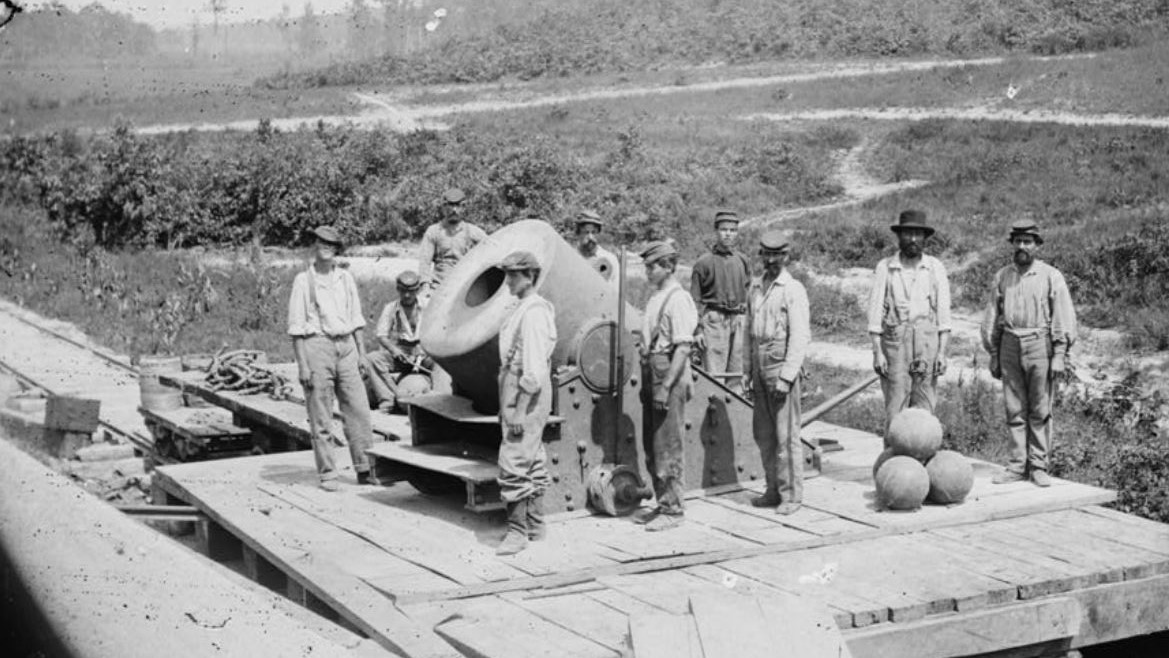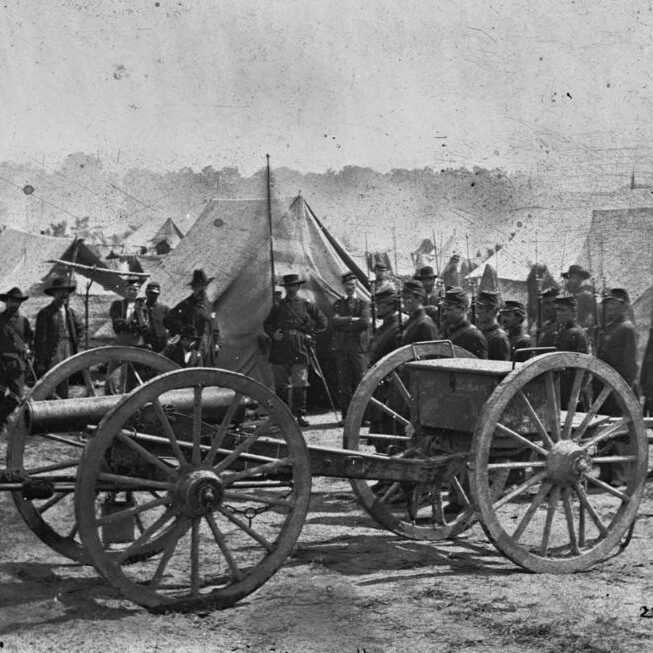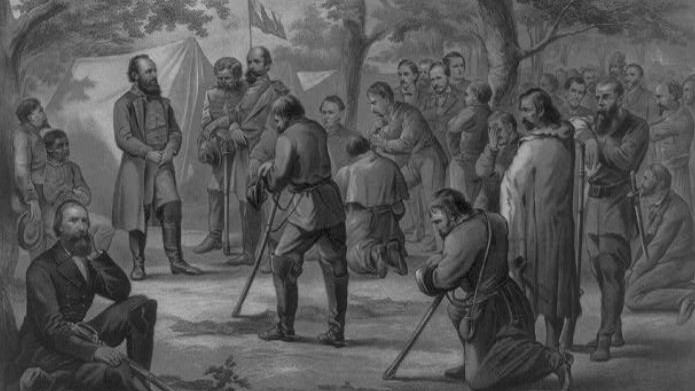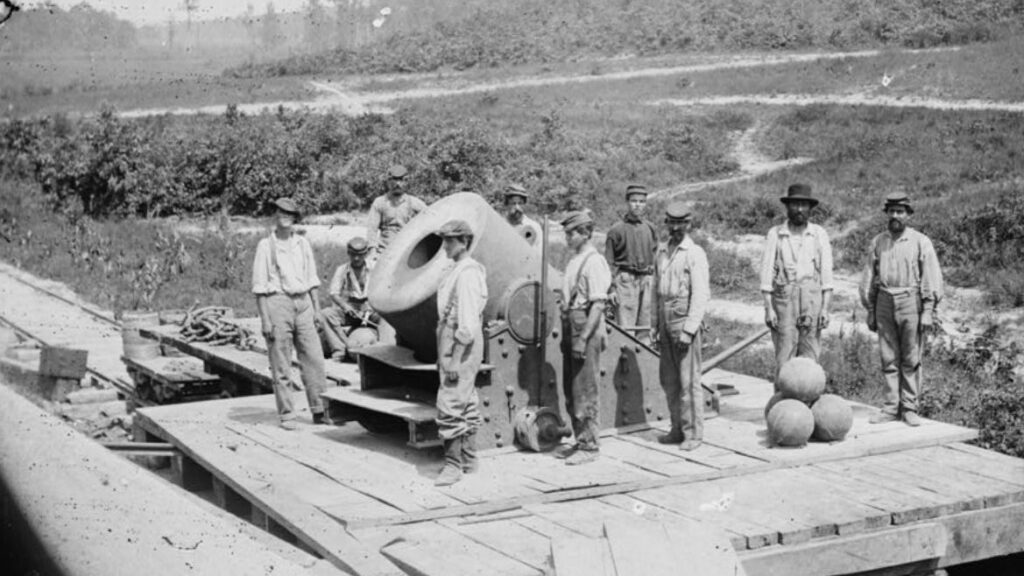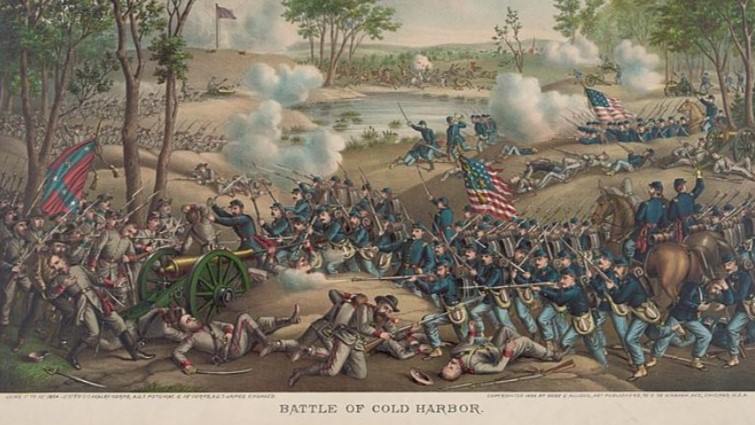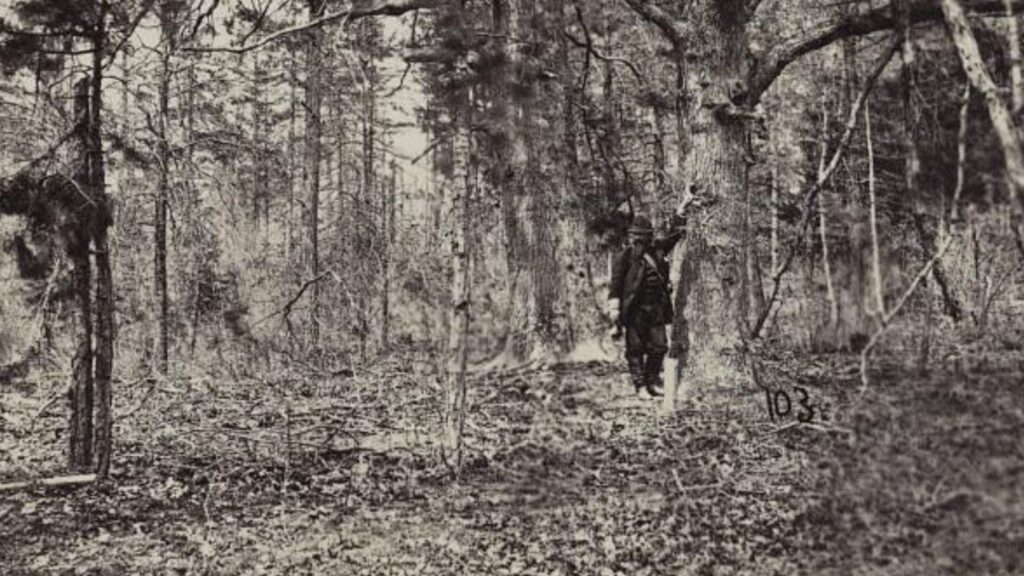The American Civil War saw many critical battles and sieges. But one of its most fiercely contested was the siege of Petersburg.
Lasting from June 1864 to April 1865, the Siege of Petersburg was pivotal in determining the war’s outcome. The Confederates’ staunch defense of Petersburg was driven by several key factors, including its strategic importance, psychological and symbolic significance, defensive advantages, desperation, and leadership.
This article delves into these factors to understand why the Confederates fought so tenaciously to hold Petersburg.
- 1. Strategic Importance of Petersburg
- 2. Psychological and Symbolic Significance of Petersburg
- 3. Defensive Advantages at Petersburg
- 4. Confederate Desperation and Determination
- 5. Confederate Leadership and Resolve at Petersburg
- 6. Social Impact on Petersburg Civilians
- 7. The Aftermath and Legacy
- 8. Final Thoughts on Petersburg
- Further Reading
1. Strategic Importance of Petersburg
The Siege of Petersburg emerged from the tumultuous events of the Overland Campaign, including the bloody battles of Cold Harbor and the Wilderness. As Union forces advanced towards Petersburg in 1864, the stage was set for a prolonged and decisive struggle in the Virginia theater of the Civil War.
Petersburg’s strategic importance cannot be overstated. Its location, just 25 miles south of Richmond, made it a critical junction for the Confederates’ supply and communication lines. This proximity to the Confederate capital meant that Petersburg’s fate was closely tied to the overall outcome of the war.
Richmond and Petersburg Railroad

Petersburg was a transportation hub, with multiple railroads converging in the city and connecting it to the broader Confederate territory.
The Richmond and Petersburg Railroad was particularly crucial, as it directly linked the Confederate capital to the Deep South. This railroad facilitated the movement of troops, ammunition, food, and other essential supplies. Its significance was critical for maintaining the operational effectiveness of the Confederate army.
The confederate war effort would be compromised without the supplies transported via the Richmond and Petersburg Railroad. The railroad ensured a steady flow of reinforcements and resources from the South. This supply was vital for both the defense of Richmond and the overall Confederate military strategy.
The effective use of this railroad enabled the Confederates to extend their resistance against Union forces.
Impact on Confederate War Effort
The city’s rail network was the lifeline of the Confederate capital. Losing Petersburg meant isolating Richmond and cutting off these essential supplies, effectively strangling the Confederate war effort.

The Union General Ulysses S. Grant was acutely aware of this and made capturing Petersburg a primary objective in their strategy to defeat the Confederacy. Seizing the city would cripple the Confederate supply lines and hasten the fall of Richmond.
By cutting off Petersburg, Union forces aimed to create a logistical stranglehold over the Confederates. This would force the Confederates into a position where continued resistance would become untenable.
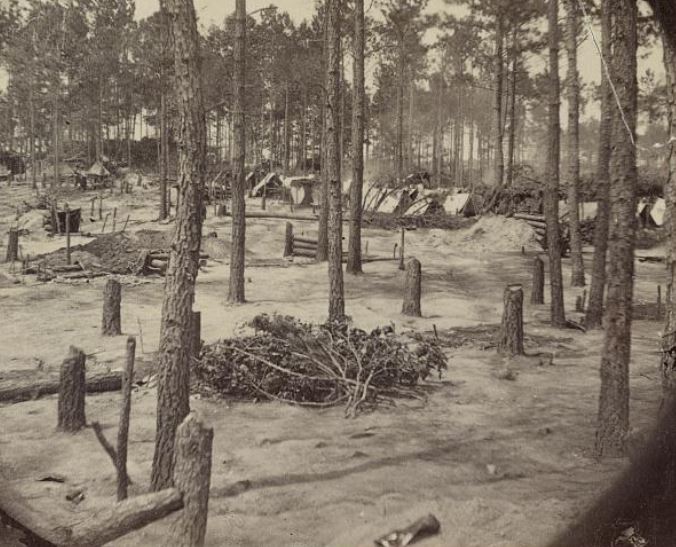
The fall of Petersburg would also have a cascading effect on the Confederate defense. Without the supplies and reinforcements flowing through Petersburg, the Confederate forces defending Richmond would be significantly weakened. This would also diminish morale among the Confederate troops and the civilian population in Richmond. This would make the Richmond’s fall more likely and imminent.
2. Psychological and Symbolic Significance of Petersburg
The defense of Petersburg held substantial psychological and symbolic importance for the Confederates. Its significance extended beyond mere military strategy, touching the very heart of Confederate identity and morale.
The Importance of Richmond

Richmond, as the capital of the Confederacy, held enormous symbolic importance. It was the political and administrative center of the Confederate states, housing the government, military command, and key supply depots.
The city’s defense represented the survival of the Confederacy itself.
Defending Petersburg was, therefore, seen as synonymous with defending Richmond. The two cities were intrinsically linked by critical supply lines and their geographic proximity.
If Petersburg fell, Richmond would be cut off from vital resources and reinforcements, making its defense nearly impossible. This made the defense of Petersburg a matter of existential importance for the Confederacy, driving their fierce and determined resistance.
Symbolic Meaning

Throughout the war, the South had prided itself on its ability to stand firm against the numerically and industrially superior North. Holding Petersburg became a testament to this enduring spirit.
The city’s defense was not just about maintaining a strategic position; it was about preserving the narrative of Southern valor and tenacity.
For soldiers, the prolonged defense of Petersburg represented a fighting chance to turn the tide of the war. It gave them a cause to rally around, fostering a sense of unity and purpose.
For civilians, especially those in Richmond, the continued defense of Petersburg was a source of hope. It reassured them that their capital and their way of life might still be preserved.
In essence, the psychological and symbolic importance of defending Petersburg provided the Confederates with a powerful motivation to hold the city at all costs. It was a fight for survival, identity, and the hope of a future where the Confederacy could endure.
3. Defensive Advantages at Petersburg
Petersburg’s terrain and fortifications provided the Confederates with significant defensive advantages. The natural and constructed defenses around the city made it a formidable stronghold, enabling the Confederates to withstand prolonged Union assaults.
Terrain and Fortifications
The city was surrounded by a meticulously designed network of fortifications, including trenches, redoubts, and batteries.

These fortifications were strategically placed to create overlapping fields of fire, enhancing the defensive capabilities of the Confederate forces. The terrain itself was utilized to create natural barriers and choke points, further complicating Union advances. The defensive works were robust and extensive, involving miles of interconnected trenches and earthworks that maximized the Confederates’ ability to repel attackers despite being outnumbered.
Trench Warfare
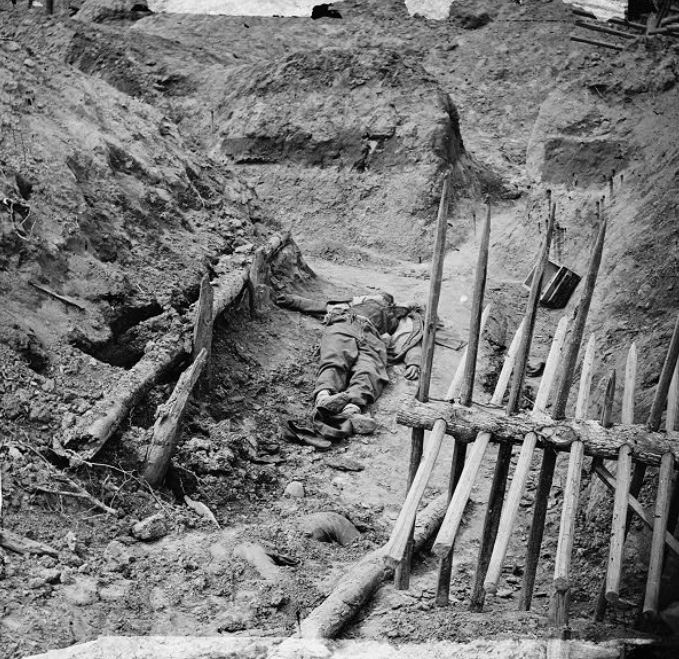
The use of trench warfare around Petersburg was particularly effective and innovative for the time.
This extensive network of trenches allowed Confederate forces to establish strong defensive positions that could be held with relatively fewer troops.
The trenches provided protection from artillery and small arms fire, significantly reducing casualties and enabling the Confederates to withstand repeated Union assaults over several months.
Trench warfare demonstrated the ingenuity and adaptability of the Confederate military strategy, allowing them to prolong the siege and inflict significant casualties on the Union forces.
Examples of Defensive Success
One notable example of the Confederates’ defensive success was the Battle of the Crater on July 30, 1864.
Union forces detonated a mine beneath the Confederate lines, creating a massive crater and initially breaching the defenses.
However, despite the initial shock and the significant breach, the Confederates quickly regrouped and launched a counterattack.
Their swift and decisive response resulted in a Confederate victory, inflicting heavy casualties on the Union forces.
This battle highlighted the effectiveness of the Confederate defensive strategy and the resilience of their troops in the face of overwhelming odds.
4. Confederate Desperation and Determination
By the time of the siege, the Confederates were fighting a desperate war. Their situation was becoming increasingly precarious, but their determination to hold Petersburg was fueled by a mix of strategic necessity and sheer resolve.
The Confederate’s Dire Situation
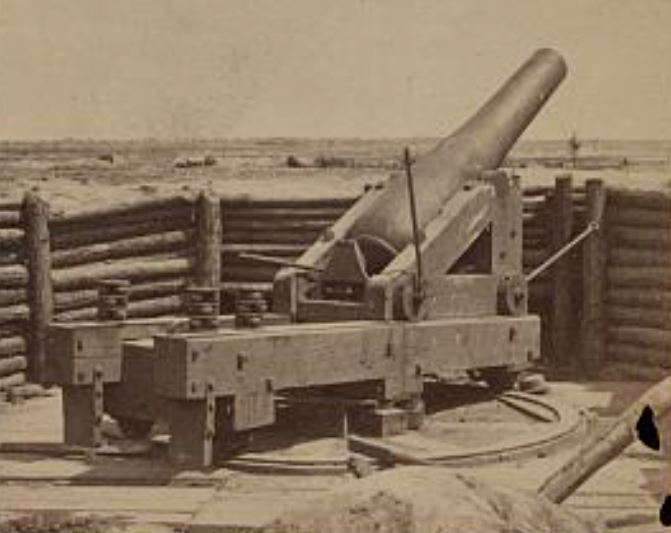
The South was running critically low on resources as the war dragged into its fourth year.
Blockades and territorial losses had severely constrained the Confederacy’s ability to supply its armies.
Food shortages were rampant. Ammunition was scarce. Furthermore, the industrial capacity of the South was insufficient to meet the demands of prolonged warfare.
The Confederates’ fierce defense of Petersburg was driven by a determination to prolong the conflict and force a stalemate. They hoped that continued resistance could lead to a negotiated peace.
Hopes for Negotiated Peace
Confederate leaders were acutely aware of the growing war fatigue in the North.
By holding out at Petersburg, they aimed to erode the Union’s will to fight. They hoped that the prolonged siege would lead to increased political pressure on President Lincoln from a war-weary Northern populace.
If public opinion turned against the war, it could compel the Union government to seek a negotiated settlement favorable to the Confederacy.
This desperation to achieve a favorable outcome at the bargaining table fueled the tenacious defense of Petersburg.
Last Stand Mentality
The Confederates adopted a “last stand” mentality during the siege.
They understood that the fall of Petersburg would likely signal the end of the war. This realization galvanized the troops to fight with unparalleled resolve and determination.
They were defending not just a strategic position, but the very survival of their nation. This mentality was evident in the intense and often brutal combat that characterized the siege.
Confederate soldiers, aware of the stakes, displayed extraordinary bravery and resilience, holding their lines against overwhelming odds.
5. Confederate Leadership and Resolve at Petersburg
The leadership of General Robert E. Lee played a crucial role in the defense of Petersburg.

His strategic acumen, inspirational presence, and tactical decisions were instrumental in sustaining Confederate morale and military effectiveness during the protracted siege.
Lee was a revered figure in the South, admired for his strategic brilliance and personal integrity. His reputation as a formidable military leader was well-established, and his presence at Petersburg served as a significant morale booster for the Confederate forces.
Soldiers under Lee’s command were motivated by their deep respect for him, which was a critical factor in maintaining their resolve despite the dire circumstances they faced.
Strategic Decisions
Under Lee’s command, the Confederate forces employed effective defensive strategies that maximized their limited resources.
He effectively utilized the complex network of trenches and fortifications around Petersburg to create strong defensive positions that could be held with relatively fewer troops.
His strategic decisions during the siege, such as reinforcing critical points and orchestrating counterattacks, showcased his ability to exploit the defensive advantages of Petersburg.
Lee’s leadership in allocating scarce resources, managing troop movements, and maintaining the coherence of the defensive line was crucial in prolonging the Confederate resistance.
Anecdotes of his presence on the front lines, where he often personally inspected positions and interacted with soldiers, highlight his direct engagement and personal commitment.
These actions were not just symbolic but also practical, as they allowed him to make informed decisions and boost the morale of his men.
6. Social Impact on Petersburg Civilians
The prolonged siege had profound social impacts on the civilian population of Petersburg, significantly altering daily life and creating severe hardships.
Hardships and Food Shortages
Petersburg civilians endured severe hardships, including acute food shortages and the constant threat of bombardment.
The siege strained the city’s resources to the breaking point, leading to widespread hunger and malnutrition.
Basic necessities became scarce, and the civilian population was often forced to rely on whatever food could be scavenged or rationed.
The constant bombardment by Union forces not only destroyed homes and infrastructure but also instilled a pervasive sense of fear and uncertainty, further exacerbating the suffering of the city’s residents.
Medical Care and Disease
The siege brought significant medical challenges, with disease and inadequate medical care plaguing both soldiers and civilians.
Overcrowded and unsanitary conditions led to outbreaks of illnesses such as dysentery, typhoid, and smallpox.
Medical supplies were limited. Existing healthcare infrastructure was overwhelmed by the sheer number of wounded and sick individuals. The lack of adequate medical care exacerbated the suffering of the civilian population.
7. The Aftermath and Legacy
The fall of Petersburg in April 1865 marked a turning point in the Civil War, heralding significant changes in the conflict’s course and shaping the nation’s future.
Fall of Richmond
The capture of Petersburg directly precipitated the fall of Richmond, the Confederate capital. On April 3, 1865, Union forces breached the Confederate defenses and entered the city, marking the collapse of the Confederate government.
The fall of Richmond dealt a severe blow to Confederate morale and demonstrated the vulnerability of the Confederacy’s heartland. It was a symbolic victory for the Union and a pivotal moment in the war’s final stages.
Surrender at Appomattox
Following the fall of Petersburg and Richmond, General Robert E. Lee, the commander of the Confederate Army of Northern Virginia, surrendered to General Ulysses S. Grant at Appomattox Courthouse on April 9, 1865.
This event effectively ended the Civil War, marking a decisive Union victory.
The surrender at Appomattox was a momentous occasion that signaled the reunification of the nation and the beginning of the Reconstruction era. It laid the groundwork for the reconciliation between North and South and the eventual healing of the wounds inflicted by the war.
Implications for Modern Warfare
The siege of Petersburg underscored the importance of logistics and supply lines in modern warfare, highlighting how the control of key strategic positions could shape the outcome of a conflict.
8. Final Thoughts on Petersburg
The Confederates’ defense of Petersburg was driven by a confluence of strategic necessity, symbolic importance, defensive advantages, desperation, and leadership.
Each of these factors contributed to their tenacity and prolonged resistance.
The fall of Petersburg, after a nine-month siege, marked the beginning of the end for the Confederacy and led to the surrender at Appomattox Courthouse shortly thereafter.
The fierce defense of Petersburg remains a testament to the determination and resilience of the Confederate forces during one of the Civil War’s most pivotal campaigns. Its legacy continues to shape our understanding of the conflict and its impact on American history.
Further Reading
Suggested Readings:
- “The Siege of Petersburg: The Battles for the Weldon Railroad, August 1864” by John Horn
- “Richmond Redeemed: The Siege at Petersburg” by Richard J. Sommers
- “Grant and Lee: The Virginia Campaigns 1864-1865” by William A. Frassanito
Related Articles
If you enjoyed this article, you may be interested to read more about the American Civil War events, such as battles in Virginia, Maryland and North Carolina or more general American history.

